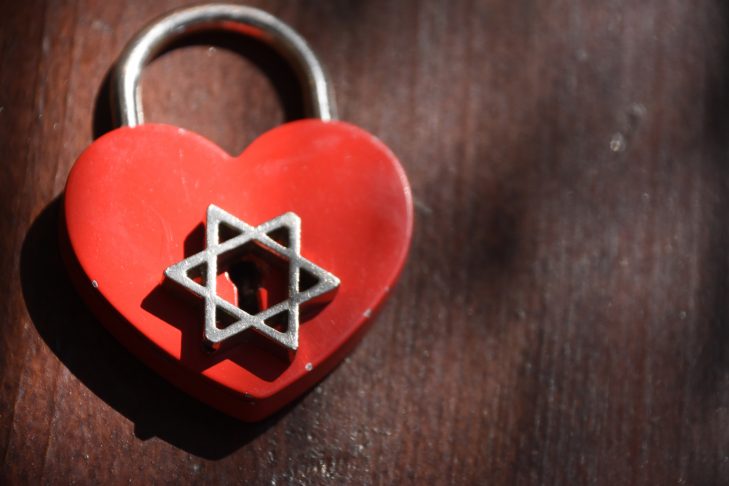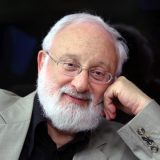In modern-day Israel, Tu b’Av (the 15th of Av) has become a feel-good day, mostly characterized by spouses buying chocolate and flowers for each other to celebrate their romance. Basically, a Jewish version of Valentine’s Day, if you will.
But Tu b’Av has been a lot more than that for the Jewish people. It is written, “There were no good days for Israel like Tu b’Av, a day when the tribes were permitted to mingle with each other and where each and every person bestowed their goodness upon their fellow man” (Tiferet Shlomo). The kind of love Tu b’Av truly represents is an unconditional love that has to spread among all Jews and then throughout the whole of humanity. And it is no coincidence that it comes right after Tisha B’Av, which represents the polar opposite—unfounded hatred.
From Unfounded Hatred to Unconditional Love
The direct transition from Tisha b’Av (ninth of Av) to Tu b’Av symbolizes the only way in which we can attain true love—by first recognizing that our state is completely opposite to it. In other words, the recognition of an unfounded hatred that dwells in our hearts is the precondition for the attainment of unconditional love between us, as is written, “Tu b’Av is the correction and mitigation of Tisha b’Av” (Likutey Halachot).
It may not be intuitive to us, but the whole of nature works this way. Evolution displays a dynamic interplay of two opposite forces. Whether they manifest as plus and minus, hot and cold, ebb and flow or male and female, they create deeper levels of conflict and self-interest and then greater levels of reciprocity and connection. This is how ancient bacteria evolved from hostile competition to shared responsibility, thus forming the nucleated cell. Our bodies also exemplify this perfectly, with up to 100 trillion individual cells, integrated to create a more advanced level of life.
About 4,000 years ago, Abraham, the founder of the Jewish people, understood that this natural dynamic also applies to human society. When the Babylonians around him sank into self-interest and separation, he recognized that state as a precursor for a new degree of human connection. Abraham “seeded love for all people” (Noam Elimelech, Sefer Noam Elimelech) with the vision of a higher state and “went from city to city, kingdom to kingdom, until thousands and tens of thousands joined him… and they became a nation” (Maimonides, Yad HaChazaka).
This is the little-known birth story of the Jewish people. In fact, the word Yehudi (Jewish) means Yechidi, “‘one who clings to the point of life,’ which is where unity is” (The Admor of Gur, Sefat Emet).
Where Is the Love Today?
The Hebrew calendar says it is time for the festival of love, but reality shows that the Jewish people are perhaps more divided than ever, with growing rifts between liberals and conservatives, Israeli Jews and Diaspora Jews, and between the various factions within Israel itself—possibly the harshest hostility demonstrated daily. However, just as Abraham saw thousands of years ago, the hatred and separation that persist within the Jewish people today is not coincidental. It’s an evolutionary stage, a precursor to the next degree of Jewish unity.
And in our time, there is even more that’s brewing under the surface. Since the formation of the people of Israel in Babylon, the world began to feel that Jews hold onto something special and to ponder what binds them together. Thinkers, leaders, scientists and artists from various nations have written about this riddle for centuries.
“What is the Jew?” contemplated illustrious Russian author Leo Tolstoy. “What kind of unique creature is this whom all the rulers of all the nations of the world have disgraced and crushed and expelled and destroyed…continues to live and to flourish?” (“The Final Resolution”). Mark Twain expressed this even more bluntly, saying that: “All things are mortal but the Jew; all other forces pass, but he remains. What is the secret of his immortality?” (“Concerning the Jews”).
So what is it that the Jews hold the access to? They hold the method for building a network of altruistic connections above the growing self-interest. And the nature of human development is such that humanity is gradually generating a greater and greater need for this method. Thus, the method of attaining true love among human beings, which is the foundation of the Jewish people, is gradually becoming what the whole world needs.
The Method for Attaining Love
For the past 2,000 years or so, what remained from the method of unity that created the Jewish people are mostly symbols, such as the customs and holidays that have become today’s Judaism as we know it. Only a handful of people in each generation continued to engage in and develop the method of unity. Over time, this method took on the name, “the wisdom of Kabbalah.”
Contrary to popular belief, authentic Kabbalah has nothing to do with mysticism, amulets, astrology and other misconceptions that have been linked to it throughout the centuries. Rather, it is about upgrading our nature from the growing self-love that leads us to crises and leaves us with a limited perception of reality to an equivalence with the force of unconditional love that permeates all of nature.
The wisdom of Kabbalah has the tools and knowledge to prepare us for the whole new level of human life and experience that the world is inevitably moving toward. And so, from Kabbalah’s perspective, Tu b’Av is not about paying compliments to each other for one day and then going back to fighting and biting. Rather, this day should be a compelling symbol for the work we have to do every day in order to rise to a new level of connection between us and to share it with all of human society. As the luminary Kabbalist Yehuda Ashlag wrote, “All our work is to discover love within us, each and every day” (“A Sage’s Fruit”).
This post has been contributed by a third party. The opinions, facts and any media content are presented solely by the author, and JewishBoston assumes no responsibility for them. Want to add your voice to the conversation? Publish your own post here. MORE



